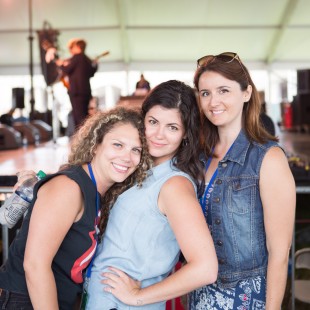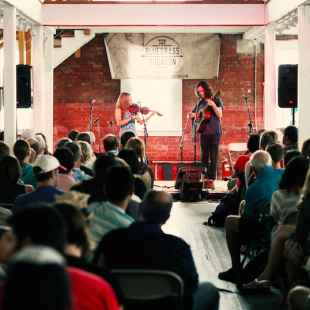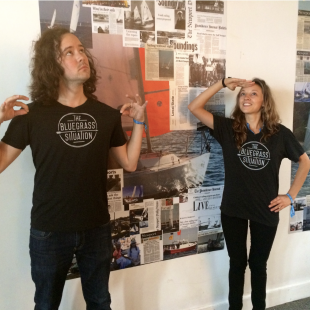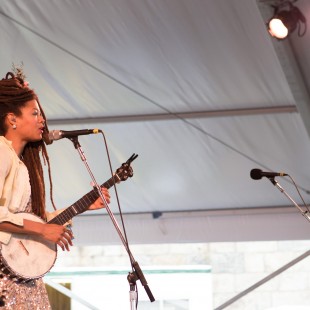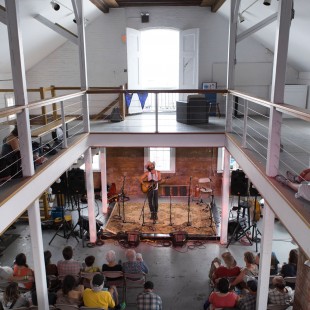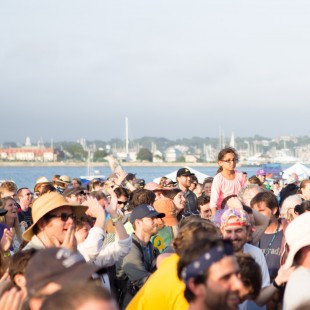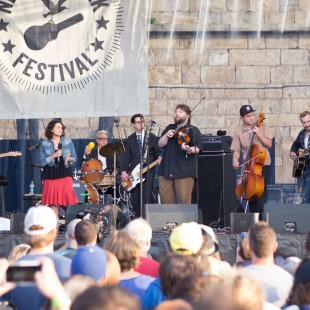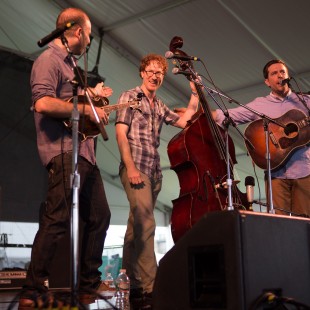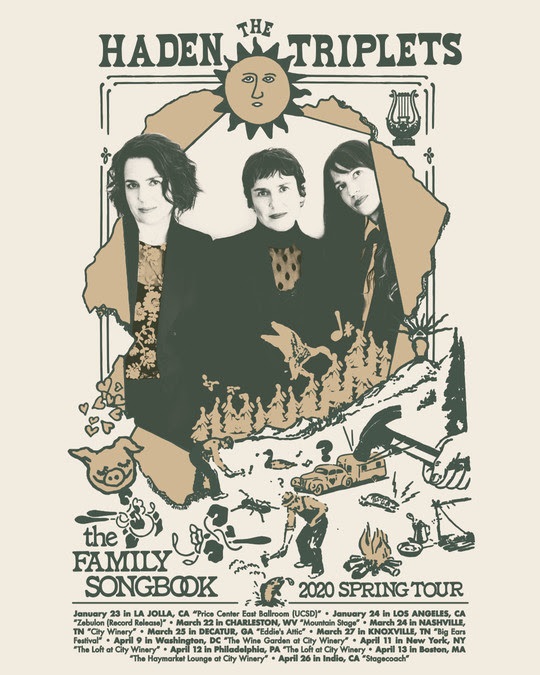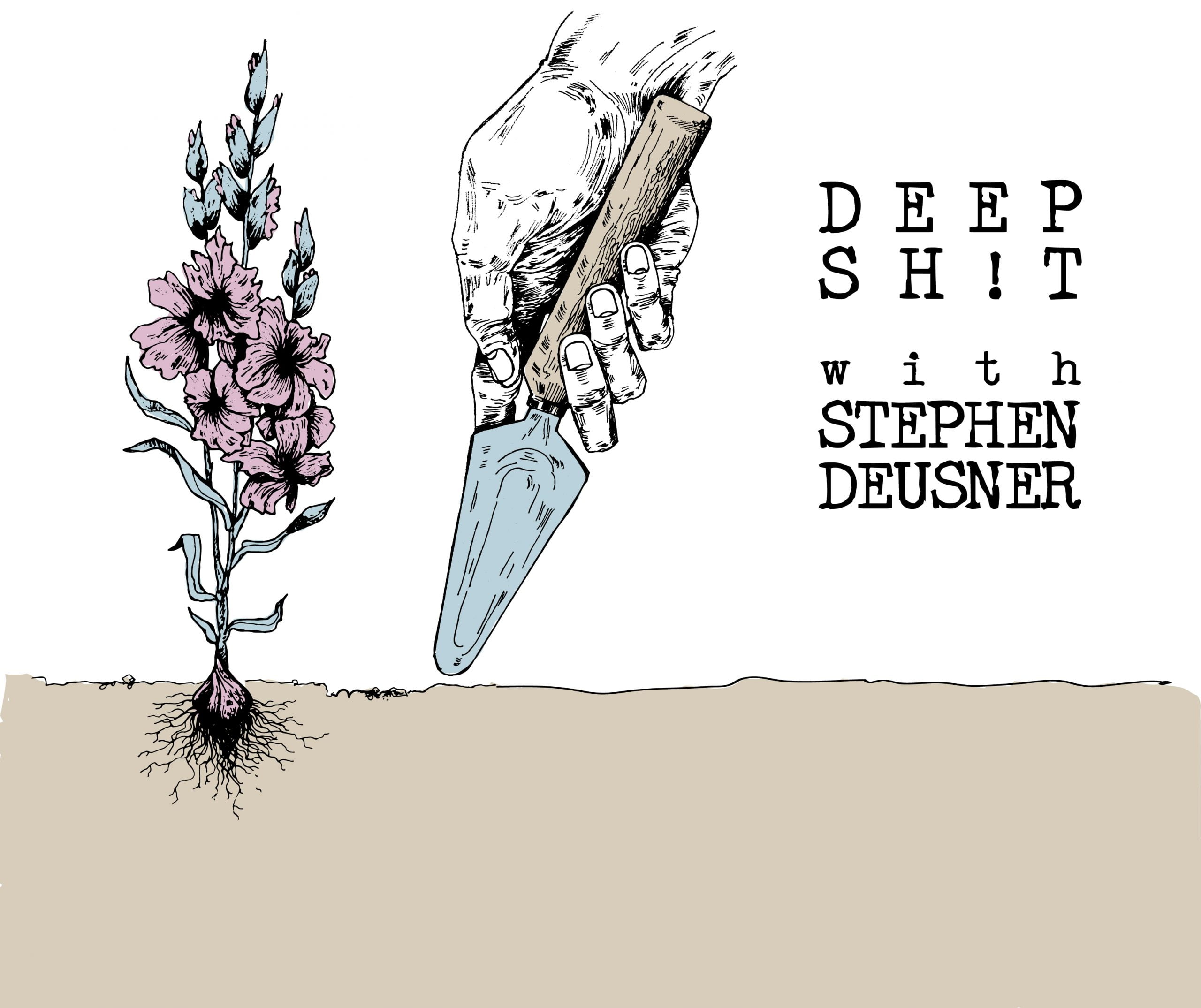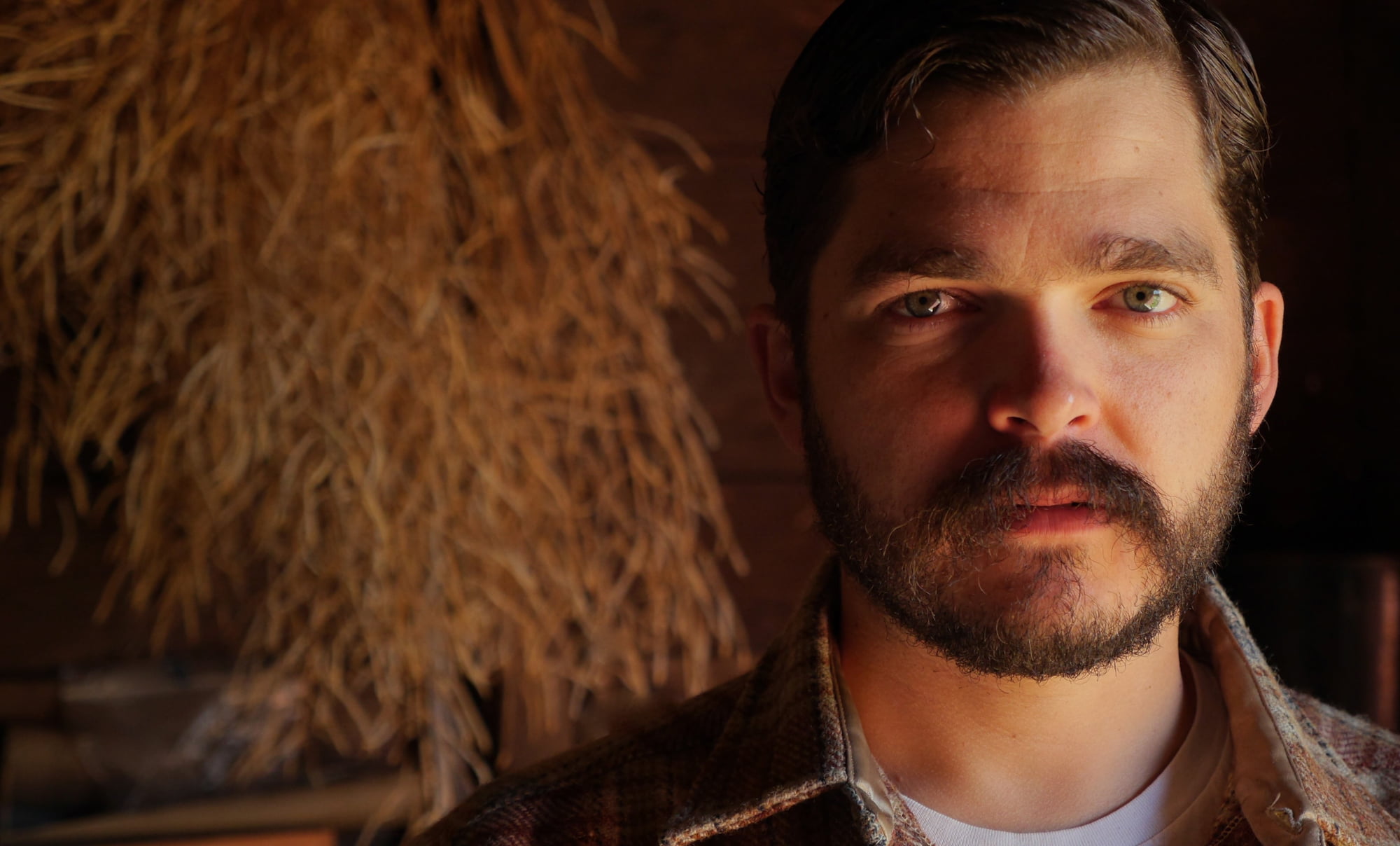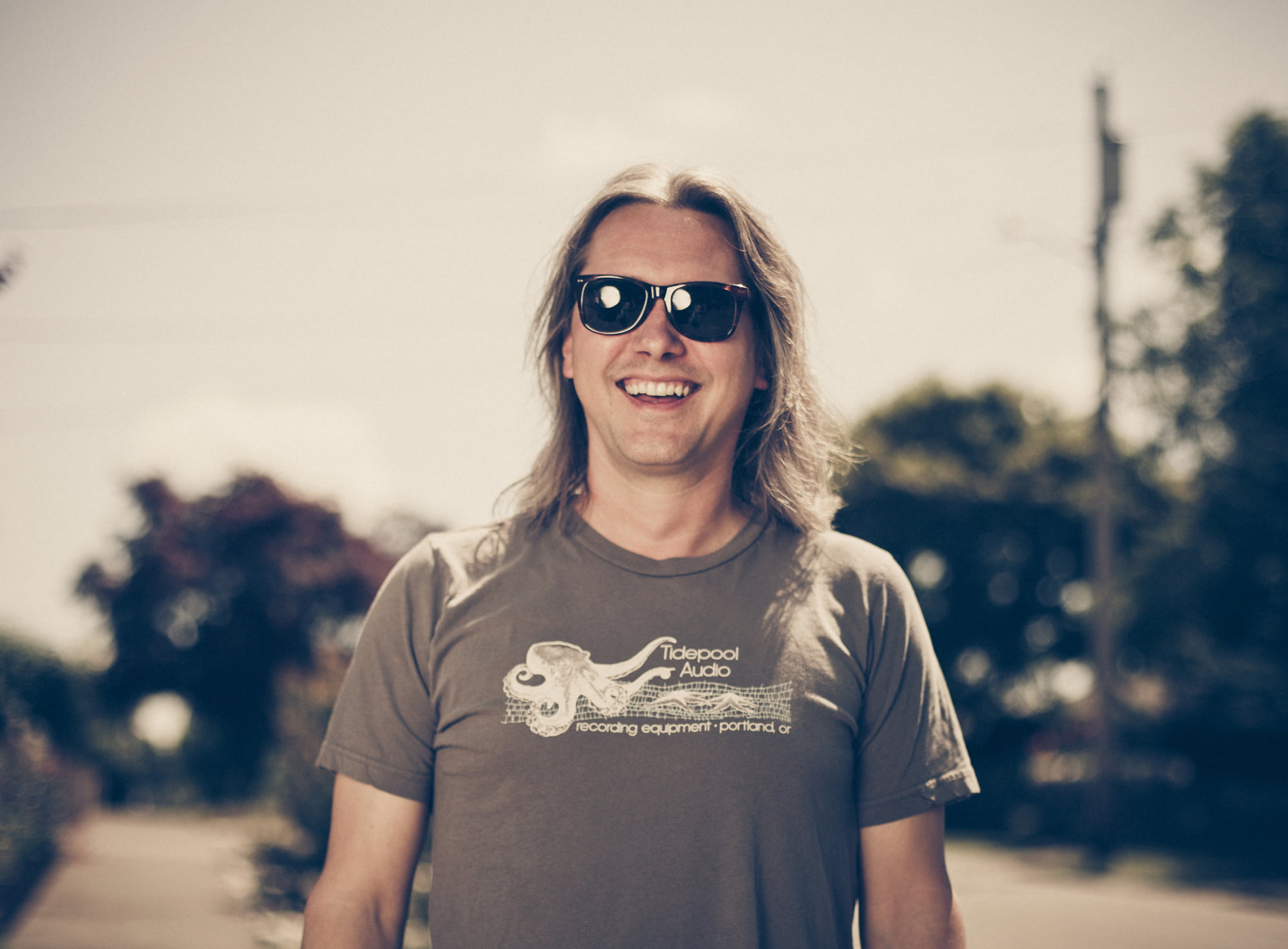The Great Depression was just sputtering to a close, Europe was a mess, and the attack on Pearl Harbor was still several months away when Woody Guthrie moved his family from New York City to Portland, Oregon. He’d been hired by the Bonneville Power Administration to pen a series of songs for a documentary film about various engineering projects in the Pacific Northwest — namely, the Grand Coulee Dam in Washington State and the Bonneville Dam across the Columbia River. Spearheaded by the Public Works Administration and the U.S. Army Corps of Engineers, these feats of American ingenuity would bring water and power to areas that had previously seemed uninhabitable or unfarmable.
The film was never completed, but during the month he and his family lived in the Pacific Northwest, Guthrie wrote 26 songs — which itself seemed a feat of American ingenuity. The populist folkie extolled the achievements of industry, as well as the heroic fortitude of the common American worker. Some of the lyrics never made it off the page of his notebook, while others became … well, Guthrie never had what you might call hits, but “Pastures of Plenty” and “Grand Coulee Dam” and even “Roll, Columbia” became popular tunes within his catalog.
To mark the 75th anniversary of Guthrie’s short but productive tenure with Bonneville, Smithsonian Folkways is releasing a rambunctious double album of new covers called Roll Columbia: Woody Guthrie’s 26 Northwest Songs, featuring mostly musicians based in the Pacific Northwest and still affected by these engineering projects. Contributing their own interpretations of these tunes are members of the Decemberists, R.E.M., the Minus Five, Timberbound, and Dolorean, along with Orville Johnson, Martha Scanlan, David Grisman, and Michael Hurley, among others.
(The album follows the excellent book, 26 Songs in 30 Days: Woody Guthrie’s Columbia River Songs and the Planned Promised Land in the Pacific Northwest, by KEXP radio DJ Greg Vandy and journalist Daniel Person.)
While neither Jon Neufeld nor Cahalen Morrison are Pacific Northwest natives, they both have lived there long enough to call the region home and have been active in the Portland and Seattle folk scenes, respectively. A veteran of Dolorean and Black Prairie, Neufeld oversaw nearly every aspect of Roll Columbia, while Morrison covers two songs: the rip-roaring industrial cautionary tale “Lumber Is King” and the majestic “Ballad of Jackhammer John,” which rolls along like the Columbia itself.
What is your experience with Guthrie’s Columbia songs? How familiar were you with them before you started this project?
Jon Neufeld: Well, my initial experience was, “Oh, I recognize some of these songs.” Nothing further than that. I didn’t recognize them as being songs that he wrote after he was hired by the Bonneville Power Administration or any of the specific history that goes along with it. My dad’s a folk singer, so I grew up on Woody Guthrie, Bob Dylan, Simon & Garfunkel, and all that classic folk music — a lot of the peace-and-justice songs. A lot of Guthrie’s songs were familiar to me, but when [executive co-producer] Joe Seamons approached me about doing the project, I started listening further and could see a thread through these songs that had been somewhat invisible to me. That made me think about the music a little differently because it seemed so obvious, in retrospect, that they were all connected.
Cahalen Morrison: I had a similar introduction, I guess, in that I was familiar with a handful of the songs, the more well-known ones — “Pastures of Plenty” and things like that. But I wasn’t familiar with the majority of it. I’ve never been a huge Woody-head or anything like that. Joe approached me, as well, and offered me the gig, which turned out to be fantastic. I’m not originally from the Northwest, but I’ve been living here for quite a while now. It was fun to hear all this music written so specifically for the area. I’ve done a lot of touring and traveling around, so I’m familiar with the countryside around it and really enjoyed digging into these songs and seeing how they represented this part of the world. That it was all bought and paid for by Bonneville was a funny thing to discover, but it didn’t make it any less cool or discredit the songs in any way. I find it impressive that he did what he did.
JN: Twenty-six songs in 30 days is a lot.
CM: I’m a songwriter and a fairly prolific one, I suppose, but that is pretty insane. I can’t even fathom that.

Did this project change the way you see this area that you both moved to?
JN: I’ve lived here for 20 years now, longer than I’ve lived anywhere else, and these songs described the area pretty much to a tee. They reminded me of the beauty that’s around here, but also of this issue of self-sufficiency. You want to provide your own electricity and jobs, but at what cost? Harnessing the environment around you, in order to derive your own power initially seems like a good idea, because you can be self-sufficient. You can have light and power and jobs and you don’t have to borrow them anybody else. It’s right here in this rushing river, and the feats of engineering were really celebrated at the time. But you end up losing sacred land of the Native Americans. You have erosion in places that never had it before. But you also have water coming to places that were never able to grow wheat before. Basically, you’re changing the landscape and, at first, I think that was seen as a good thing. For some places, it certainly is. But overall, maybe not so much.
CM: You can look at it from both an environmental perspective and from a social or humanistic perspective, and it’s a double-edged sword. It does give water to places that weren’t getting water, which allows people to grow food and attract jobs. But, at the same time, it does take away from the natural beauty of the area and it does completely change the habitat for people and for wildlife. So you can look at it as thing that was great for humans and culture and society, at that point in time, but it has swung the other way now. Now we’re trying to get rid of dams.
JN: We’re still discussing these same issues right now in the same places, but back then it must have seemed like uncharted waters. They were a lot more excited about it then; these are songs of hope. They’re historical documents about that time.
CM: I had a similar experience. The songs sound really accurate and contemporary even though, at this point, they’re historical documents. None of these issues have changed. In fact, I feel like it’s only gotten more severe, so maybe it’s even more poignant now than it was then. Guthrie is more famous now than he was then, but I don’t feel like he has the reach he had then and the gusto that came along with being a current icon. Now, people are more able to write off historical songs like these as some cute thing that happened long ago and don’t really apply to anything going on right now.
That was one thing that struck me about Roll Columbia. It walks a fine line between celebrating these songs and exploring the consequences of the Bonneville Power Administration.
JN: I strongly believe that, if Woody were alive today, he could still sing these songs. He might have to change a word or a turn of phrase here and there. I recently read a biography of him and, during this time in his life, he was looking for work. He had a family, three kids, and he would go back and forth between being completely broke and having a job. So this place wants to hire me to write these songs and move the family up there and I’ll have work for a month? Sure. In some ways it was just another gig for him, but just another gig for an artist with his perspective turned out to be another batch of great songs. I think the beauty of the Northwest really overtook him and was the catalyst for these songs, but it’s interesting when you look at it in the context of his life: This was only 30 days out of all those years.
Cahalen, you address some of these issues in your version of “Lumber Is King.” What drew you to that song?
CM: Lyrically I thought that song was fantastic. I love the lyrics. It goes back to what I was saying about the double-edged sword. It’s all about these booming lumber towns that were making all this money. People were happy and prosperous. But then it all dries up and everything is gone: the jobs, the money, the land. It just destroys everything. As a piece of art and as a political statement, I thought “Lumber Is King” was really powerful. Woody did a great job on that one.

That was a set of lyrics that he had never set to music, much less recorded. What was it like taking it that next step?
CM: I did that for both of the songs I sing on here. It’s another reason why I chose them, because they didn’t have music. Being a songwriter, I thought it would be a fun thing to take a whack at. For “Lumber Is King,” I wrote this romping bluegrass waltz sort of thing, and I was inspired by a town called Darrington, up north of Seattle. It has a big Tarheel population, from when people relocated from North Carolina for logging. There’s a big bluegrass festival there now and there’s a funny pocket of bluegrass culture there. I liked the continuity of arranging this song in a fast bluegrass style. It felt natural to me, even though — and I don’t mean this in a negative way — it was written in a very obvious cadence that fits well within whatever kind of tune you wanted to write to it.
And you both worked on your other song, “The Ballad of Jackhammer John.”
JN: There’s a funny story behind that one. Some of Woody’s titles are really similar, and I was in the studio with [Montana-based singer-songwriter] Martha Scanlan and Joe Seamons working on a song together. I thought, “Wow, this is really working. It sounds great.” Totally different song than the one we were supposed to be doing. It wasn’t “The Ballad of Jackhammer John,” but “Jackhammer Blues (Jackhammer John).” Completely different song. I got a call at 8 o’clock the next morning, about an hour before we were supposed to start the next day’s session. It was Joe saying we had a problem. Martha had recorded a song that we had already recorded with another artist [Orville Johnson]. Well, that is a problem because Martha just left for the airport. We had to figure something out. Was it your idea, Cahalen, to record it yourself?
CM: It was not my idea, no. I remember the initial idea was that we were going to trying to get everybody to sing a verse, but we were still trying to figure out the lyrics. Talk about not an easy cadence! With that one, I felt like Woody was like, “I gotta get 17 more verses,” so he just sat down and pounded them out. There’s some really awkward phrasing and strange words in there. So I sat down right before I left, figured out how to sing all those verses, and recorded myself reading off the lyrics sheet. It was just to have a blueprint for everybody to follow, but later I found out it’s just me on the final recording!
JN: I don’t remember how we came up with it, but it was Joe Seamons playing banjo and I was playing a guitar. It’s an eight-minute song and we didn’t have any vocals to play to, so he had to develop a system of signals for when we would change. Joe would turn his head to the left, and we would switch to the minor chord. If he put his head down, we went to the 5-chord. We did it all in one take — about nine minutes’ worth of playing. Then Cahalen went in there and did all the verses in one take. After he had gone home, I remember listening to it and thinking, “Hey, this really works!” The song is this eight-minute monster with all these complicated verses, but it ended up being the simplest one of them all.
When did you find out that they were using your take, Cahalen?
CM: I don’t remember. I think it was when the mixes came. “Oh, okay, I guess we’re doing it that way.” I would have done another take or two to get some of that squirrelly stuff figured out, but hey, at least it was organic.
JN: That was one of the things I was aware of most during the production. There was zero polish on Woody’s songs, so I felt we should lean toward grittier takes. That seemed to reflect where the songs came from. And “The Ballad of Jackhammer John” is a perfect example of knowing how you’re going to do it and just doing it.

At what point in the process did you decide that you wanted to emphasize regional musicians?
JN: That was from the very beginning, the first conversation we had. The songs are about the Pacific Northwest, and there are a lot of great musicians in the Pacific Northwest, so let’s do that. It’s not like we were only going to use musicians from this area; if we thought someone on the East Coast could be great, or from the South, or from wherever, we’d consider them. But when you live out here or on the West Coast, in general, there are just so many great musicians that you meet but never get to hang out with until there’s a project to do. So it becomes a perfect reason to reach out and say hello. I met Pharis and Jason Romero when I was on Vancouver Island touring with my friend Kristin Andreassen, so I thought of them for this project. They recorded all the way up in Horsefly, which is way up there in northern British Columbia, and they sent the tracks back to me. There are all these little connections between different people, even though it’s a big area up here. It starts to seem pretty small when you tour for a long time.
CM: That’s true. It’s good to hang with people you don’t get to see very often. When you hear other people’s takes on their tunes, even though I didn’t get to see them, it can have a nice effect and make it seem like a community project. It’s good to have friend along for the ride.
That’s an enormous amount of territory to seem like a small community.
JN: The Pacific Northwest is Montana all the way down diagonally to California and up into Canada. It’s all different kinds of music, too. Not just folk or old-time or bluegrass, although those are some of the most tight-knit communities I’ve ever seen. I don’t know why there is so much music out here. It may have a lot to do with the land because, when I go out to the East Coast, it feels very different. There are tight-knit communities in certain boroughs of New York, but those people wouldn’t necessarily be tight with people in Boston, even though that’s the equivalent of us going to southern Oregon. On the East Coast, though, you cross a couple of states. So I think it has a lot to do with landscape.
How does the landscape inform the music you make?
JN: Cahalen, do you find yourself pulling from the things around you that are outside the realm of relationships?
CM: I would say it’s equally inspiring, even if it just reminds you of your relationships and experiences with people. Not to sound cheesy, but being out there in the wilderness and seeing those big vistas really does open your mind up. It has a very strong effect on me, and that’s mostly what draws people to the West. You get a lot of likeminded people who have chosen to be here. Outside the West, I think people just live where they live because they live there. It’s maybe not as intentional. I know there are communities like that outside of the West, but I would say it’s a prevailing thing that the West has in common with the Southwest, which is where I’m from. People move to New Mexico because they want to live in New Mexico.
Photos courtesy of the artists.

